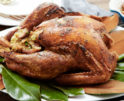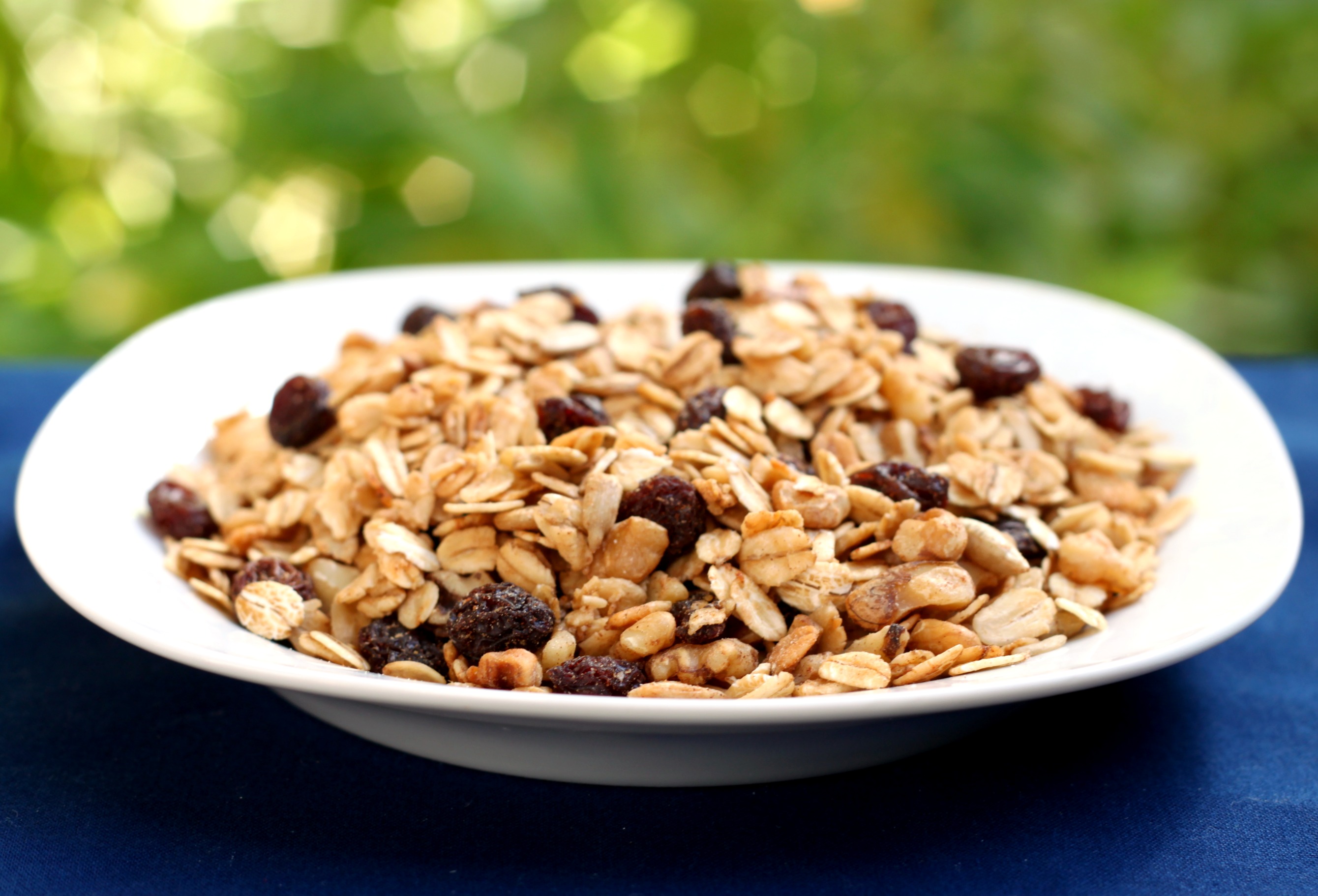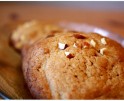
Kombucha
We found this article on a webiste and thought it would be nice to re-post.
website: http://www.intentionalhealthnews.com/articles/good-health-is-a-choice-not-chance.html
Adelle Davis, nutritionist and author, and considered by many to be “the Mother of Nutrition” wrote in 1947, “As I see it, every day you do one of two things: build health or produce diseases in yourself.” My mother was a devotee of Adelle Davis and made yogurt in the 1950′s long before any commercial yogurt was a gleam in any manufacturers eye. Rather than resolutions at this time of the year, which in my case are always doomed to failure, I like to make choices and changes to build health and they almost always include trying new things. I ‘m going to add more fermented foods to my diet. First on the list is Kombucha and even finding a SCOBY (symbiotic colony of bacteria and yeast which sounds, looks and feels disgusting but what the heck, it’s all about trying new things) to make my own. Fascinating and funny article by Kristin Hinman in Washington Post Food Section on December 28th about Kombucha. What choices and changes have you decided to make this New Year?
Kombucha
The Washington Post, December 29, 2010
- Course: Beverage
Summary:
Kombucha should be tart and tangy, neither too sweet nor too sour. Of course, taste is subjective. Kristen Hinman finds that seven to 10 days of brewing works well in the warmer months, while 2 to 3 weeks generally is required in cooler weather. Taste it, and bottle it when the brew reaches your desired tartness.
Kombucha can’t be made without a starter SCOBY (symbiotic colony of bacteria and yeast) and some kombucha that has already fermented. For safety reasons, food scientists recommend against trying to start your own SCOBY. Instead, procure one from a friend or via online forums such as Craigslist; SCOBYs also can be purchased from online vendors such as Kombuchabrooklyn.com and Getkombucha.com. Whoever provides the SCOBY should also provide a cup or more of fermented kombucha; alternatively, bottled kombucha can be purchased at Whole Foods and many organic markets. In between brewing batches of kombucha, store the SCOBY in a cup of fermented kombucha in a glass bottle. It will keep for years.
White sugar is a requisite; neither agave nor honey will work. You can change the drink’s flavor profile by experimenting with different teas, though. After plain old black tea, a basic white-pomegranate from Trader Joe’s is Hinman’s second choice.
Never use reactive vessels for brewing kombucha or for storing the SCOBY; glass is best. And, should any mold ever form on the SCOBY or in the kombucha, discard both and start over.
Makes 1 gallon
Ingredients:
- 1 gallon bottled or filtered water
- 8 regular-size black-tea bags
- 3 cups sugar
- 1 cup kombucha
- 1 kombucha SCOBY
Directions:
Bring the water to a boil in a large stockpot. Turn off the heat, add the tea bags and sugar, stir with a wooden spoon and let steep for 45 minutes. Remove the tea bags and cool the sweetened tea to room temperature, about 45 minutes to one hour.
Thoroughly clean a 1-gallon, wide-mouth glass vessel with hot, soapy water. (You may use 2 half-gallon jars if you’d like, but you’ll need 2 mother SCOBYs if you do so.) Pour the sweetened tea into the jar. Add the kombucha. Use wooden tongs or your clean hands to add the SCOBY, which may float or sink.
Cover the jar with cheesecloth or a paper coffee filter fastened in place with a rubber band.
Let the kombucha sit undisturbed on a countertop or atop the refrigerator for at least 7 days in warm weather, 2 to 3 weeks in cool weather; then begin to taste. The kombucha is ready when it tastes pleasantly tart, neither sweet nor sour. (Always re-cover with the cheesecloth or coffee filter if the kombucha is not ready; you don’t want foreign particles, which can harm the SCOBY, entering the drink.)
One way to tell whether the kombucha is on track: A smaller, second SCOBY will form, usually attached by a thin strand or affixed to the mother SCOBY.
Remove both SCOBYs, using clean hands or wooden tongs, and reserve them for a future batch in a glass jar containing at least 1 cup of the newly brewed kombucha. Pour the remaining kombucha into 2 half-gallon clean, wide-mouth Ball jars. Cap them and leave them in a cupboard or a shaded spot on the countertop for 2 to 3 days, checking the seal on the jar. When the seal is taut, the kombucha is sufficiently carbonated; it’s ready to refrigerate and drink.
http://projects.washingtonpost.com/recipes/2010/12/29/kombucha/
The kombucha cult, or how I got hooked on making my own
By Kristen Hinman
Special to The Washington Post
Tuesday, December 28, 2010; 10:56 AMAt the end of an indulgent weekend in the New York exurbs last summer, our friends marched my husband and me into a health food store for an elixir they promised would counteract the previous 48 hours of feasting. “One bottle is plenty,” warned my friend. “Share it, and maybe even save some of it for tomorrow.”
Naturally (if you know us), Tim and I proceeded to guzzle the 16-ounce bottle of fizzy deliciousness within the first half-hour of our drive back to the District. Twenty-four hours and a few trips apiece to the loo later, we had learned Rule No. 1 when it comes to kombucha: Build up your tolerance.
The “booch,” as many quaffers call it, is a curiosity. A little freaky, a lot addictive. Here’s how it works: A mother culture, a.k.a. a symbiotic colony of bacteria and yeast, or SCOBY, is placed in a vat of sweet tea and left to ferment for a week or more. During fermentation, the mother culture devours the sugar, producing lactic and acetic acids as well as a baby SCOBY. When the tea tastes pleasantly tart, both SCOBYs are removed and the beverage is bottled and stored at room temperature for several days to carbonate. Devotees claim the booch increases energy, improves skin and hair, greases the digestive tract and boosts immunities.
According to the folklore, the Chinese were drinking kombucha more than two millennia ago. Centuries later, Europeans took to the bottle. In the early 1990s, a kombucha craze hit the United States, particularly among the HIV-positive population. These days it’s the fix of Hollywood starlets. The field once was dominated by two brands, GT’s and Synergy, from California-based Millennium Products, but in the past two years competitors have entered a growing retail market that industry sources guesstimate at anywhere from $50 million to $500 million.
My first pull on that bottle back in July apparently was a lucky break. Just three weeks earlier, kombucha deliveries had stopped after the TTB, the federal Alcohol and Tobacco Tax and Trade Bureau, alerted grocers that kombucha makers could be flouting U.S. law. Because the drink is unpasteurized, fermentation continues after bottling; if a bottle sits on a shelf too long, the alcohol content can rise above the taxable rate of 0.5 percent.
Online, I saw that some apopletic kombucha lovers suddenly cut off from their hooch were blaming Alcoholics Anonymous for tipping off the TTB. Others were bad-mouthing Lindsay Lohan, whom TMZ had photographed holding a bottle of kombucha around the time when her court-mandated alcohol-monitoring ankle bracelet had gone off.
Pretty amusing.
For us, though, life would continue. As much we enjoyed the drink, at $4 a bottle kombucha didn’t exactly smack of habit-forming.
Then Tim reminded me that on said trip to see our New York friends, he had watched our host’s husband set a batch of homemade kombucha to brew.
Bingo.
I got on Craigslist and found a woman in Northwest Washington selling a pair of SCOBYs and starter liquid for $5. “This is totally normal, right?” I thought, buzzing her intercom one Sunday and wondering if I was about to make the papers in a way that didn’t pay.
Inside, the home-brewer’s husband and toddler came to say hello as she presented the SCOBYs and explained the brewing process, telling me how kombucha had cleared up their respective digestion problems.
I exhaled.
After the tutorial, she insisted that I taste her translucent brew, whereupon my lips puckered, my throat closed and I learned Rule No. 2: Although a fine, acidic kombucha is clearly open to interpretation, the drink should not taste like cleaning solution.
Once at home, I became convinced that this highly acidic starter set wouldn’t work. As soon as I got into online forums in search of more brewing tips, however, I realized I had to deal with other issues.
For one thing, there were reports of bottles that had over-carbonated and exploded when left untended. Ah! Why had I acquired this thing right before leaving on vacation? My hardwood floors! Should I just stow the starter in the fridge and brew when I got back? Wait. No, somebody says the cold kills the culture. And what’s with these handling instructions? Do I need to grab my SCOBYs with wooden tongs? What do you mean I can’t taste the kombucha with a metal spoon?
Death was a recurring theme.
Finally, I threw caution to the wind and made the drink the way my Craigslist hook-up had instructed. Ten days later, we came home from our trip, I stuck a stainless-steel teaspoon into the jar for a taste or two, used my bare hands to remove the SCOBYs and bottled the drink. The next morning, I was happy to wake up alive. ‘Cause, hey, neurotic beats dead any day. What’s more, our kombucha was delicious.
“When I first started, I used to wear plastic gloves, because people had said, ‘You can’t have anything touch it. The dirt in your fingernails will get in there,'” Diane Rosenblatt, a longtime home-brewer in Passaic, N.J., who shipped SCOBYs across the country until 9/11, told me later. “Then I read that some far-out hippie type said never use plastic; the kombucha wants to interact with you, wants to be on your skin. So I stopped the gloves because that was one more thing to buy and store. I’d also always taken off my rings, but then I thought, ‘Oh, right, [the SCOBY] wants to know me.’ So now I just pick it up. I rinse my hands off with warm water; I don’t even use soap. It’s alive, and it adapts itself to your conditions, to the overall feeling in your house, your attitude.
“I have noticed,” Rosenblatt added, “that people who are very detail-oriented sometimes have a hard time making it.”
You see? Rule No. 3: Relax.
From the get-go, Tim and I have been hooked on the science-experiment aspect of kombucha. While I am fascinated by the slimy feel of the SCOBYs, he won’t let his fingers get near them. Some days we watch them float. Other days, they sink. Sometimes the mother and baby coexist at different ends of the container, tethered only by the thinnest strands of culture.
Flavor-wise, it’s been hard to go wrong. I’ve used plain-old Lipton black tea, organic whites and greens, and chais. I even got cocky and tried Earl Grey, which the Internet said was a sure failure. I also infused it with dried cranberries throughout the brewing process, another supposed no-no. As in cooking, I taste, taste, taste and bottle the brews to my liking.
In the meantime, some commercial kombucha has come back onto the market as makers reformulated the drinks to comply with federal alcohol laws. So I’ve been taste-testing.
Among the nationally distributed brands, Vibranz and Kombucha Wonder Drink, each available in a variety of fruity flavors, are respectable if your taste for kombucha skews sweet; GT’s packs a punch that is more tart. A number of brewers told me their formulations might change as they continue tweaking them. Several, including Millennium Products and the upstart Maine Kombucha Co., are seeking winery or brewery licenses in order to keep the drinks unpasteurized and worry less about alcohol content.
Still, unless we’re traveling, Tim and I prefer to let the housemade version work its magic on the ol’ gastrointestinal tract. And it does, right?
Well, celebrity physician Andrew Weil, the Mayo Clinic and the American Cancer Society have pointed out that definitive human clinical trials have not been conducted to show whether the drink imparts health benefits. Moreover, they question the integrity of the beverage, given the fact that two Iowa women home-brewing from the same culture had problems in 1995. (One died; the other survived a heart attack.)
Randy Worobo, a microbiologist at Cornell University who studies the good bacteria produced by fermentation and works with kombucha, has a different take.
“The science hasn’t yet been established where you can make an absolute claim,” he said. “But, scientifically, you can explain the potential benefits for gastrointestinal health. You can see a link.”
The good bacteria in kombucha don’t themselves populate in the gut, but they do release small proteins that can foster the growth of digestion-aiding bacteria in the gut, he explained.
Worobo also reassured me once and for all that as long as I don’t get mold on my culture, I won’t kill it – or my husband.
“You’ve seen mold on bread, right?” Worobo asked. “It looks the same on top of kombucha. See that, and throw it out.” To wit, Rule No. 4.
A month or so ago, we were headed back to New York, so I packed a jar of one of my best batches and two beautiful SCOBYs for our friends. Two weeks later they were thrilled at their results: much more potent than what they were used to. And so it was that I learned the ultimate tenet in the curious universe of kombucha: Pass it on.
http://www.washingtonpost.com/wp-dyn/content/article/2010/12/28/AR2010122801689_pf.html
Recommended
-
Adelle Davis’ Perfect TurkeyNovember 23rd, 2016
-
Adelle Davis Invented GranolaJune 18th, 2013
-
Wheat Germ Pumpkin CookiesNovember 19th, 2012
-
Adelle Davis’ French DressingNovember 19th, 2012
-
Adelle Davis Spaghetti SauceNovember 16th, 2012





